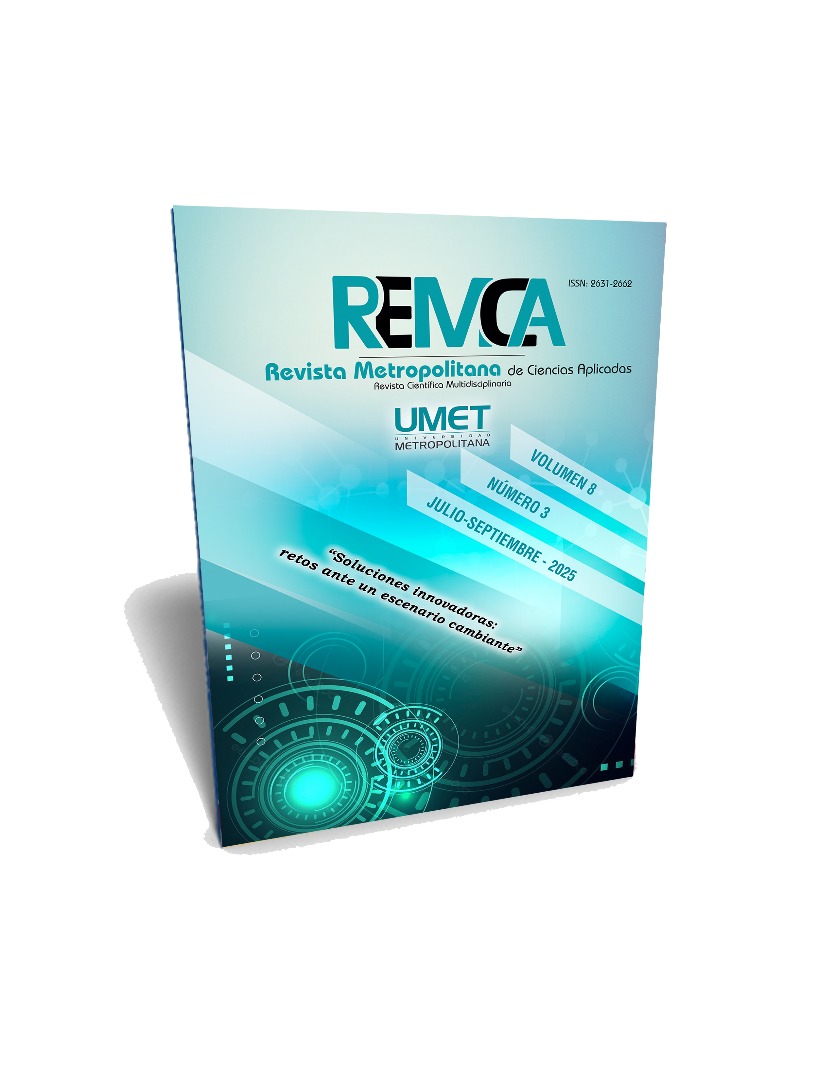Digital marketing strategies in consumer behavior at Samay Kirutoa Lodge
DOI:
https://doi.org/10.62452/3535gp07Keywords:
Competitiveness, hospitality, loyalty, social networks, digital marketingAbstract
This article addresses the main challenge facing Samay Kitutoa Lodge, located in Zumbahua, Cotopaxi: the lack of a personalized digital marketing strategy, which limits its ability to attract and retain customers. This problem impacts its competitiveness in the local tourism market, despite the growth of tourism in the region. The objective of the study is to determine the relationship between digital marketing strategies and consumer behavior to improve the lodge's brand positioning. The objective was to identify how the implementation of personalized tactics influences customer decisions and preferences. The methodology adopted was quantitative; data was collected through customer surveys. The results highlighted that customers value strategies that personalize the user experience, such as targeted promotions and relevant content. However, the lodge's lack of segmentation and advanced technological tools reduces its effectiveness in attracting specific audiences. A growing interest in digital strategies among local consumers was also identified. These elements were confirmed by the Spearman Correlation Coefficient, which ranged from Good to Very Good correlation. In conclusion, the study underscores the need to adopt more sophisticated digital marketing techniques, such as data analysis and advanced segmentation, to improve the customer experience, build customer loyalty, and strengthen the competitive position of hospitality in the tourism sector.
Downloads
References
Brakus, J. J., Schmitt, B. H., & Zarantonello, L. (2009). Brand experience: What is it? How is it measured? Does it affect loyalty? Journal of Marketing, 73(3), 52-68. https://doi.org/10.1509/jmkg.73.3.05
Calle García, A. J., Quimis Vera, M. C., Piguave Vargas, M. T., & Zambranom Luzardo, J. S. (2024). La inteligencia artificial como herramienta en la segmentación de mercado. Ciencia y Desarrollo, 27(1), 193-202. https://doi.org/10.21503/cyd.v27i1.2556
Cárdenas-Damián, D.-C., Álvarez-Cedillo, J.-A., Rodríguez-Rodríguez, A., & Álvarez-Sánchez, T. (2023). Comportamiento del consumidor en la valoración y apreciación de productos artesanales mexicanos a través del social marketing. RIDE. Revista Iberoamericana para la Investigación y el Desarrollo Educativo, 14(27). https://doi.org/10.23913/ride.v14i27.1655
Cuevas Estrada, J., SumbaNacipucha, N., & Duarte Duarte, W. (2021). Marketing de contenidos y decisión de compra de los consumidores Generación Z en Ecuador. Eca Sinergia, 12(2), 25-37. https://doi.org/10.33936/eca_sinergia.v12i2.3459
Davenport, T., & Bean, R. (2018). Big data and AI executive survey: The state of play. MIT Sloan Management Review. https://es.scribd.com/document/389696991/Big-Data-Executive-Survey-2018-Findings-1-pdf
Flores Rueda, I. C., Sánchez Macías, A., Espinosa Delgado, J. M., & Martínez Aguilar, M. F. (2024). Perfiles de consumidores de supermercados con respecto a atributos de mercadotecnia responsable. Economía, sociedad y territorio, 24(75). https://doi.org/10.22136/est20241966
Hernández-Cardona, G., & Gamboa-Salinas, J. (2024). Análisis de Big Data como estrategia de marketing personalizado en LH Computer. 593 Digital Publisher CEIT, 9(6), 1261-1276. https://doi.org/10.33386/593dp.2024.6.2796
Lemon, K. N., & Verhoef, P. C. (2016). Understanding Customer Experience Throughout the Customer Journey. Journal of Marketing, 80(6), 69-96. https://doi.org/10.1509/jm.15.0420
Palos-Sánchez, P., Reyes-Menéndez, A., & Saura, J. R. (2019). Modelos de Adopción de Tecnologías de la Información y Cloud Computing en las Organizaciones. Información Tecnológica, 30, 3-12. https://doi.org/10.4067/S0718-07642019000300003
Parasuraman, A., Zeithaml, V. A., & Malhotra, A. (2005). E-S-QUAL: A Multiple-Item Scale for Assessing Electronic Service Quality. Journal of Service Research, 7(3), 213-233. https://doi.org/10.1177/1094670504271156
Perdigón Llanes, R., Viltres Sala, H., & Madrigal Leiva, I. R. (2018). Estrategias de comercio electrónico y marketing digital para pequeñas y medianas empresas. Revista Cubana de Ciencias Informáticas, 12(3), 192-208. http://scielo.sld.cu/scielo.php?script=sci_arttext&pid=S2227-18992018000300014&lng=es&nrm=iso&tlng=es
Pérez, M., & Salinas, K. (2023). Impacto del marketing digital personalizado en los consumidores ecuatorianos. Revista Científica de Negocios Digitales, 9(1), 12–24.
Pinto Molina, S., & Granja Altamirano, K. (2022). Estrategias de marketing en redes sociales: Influencia en el comportamiento del consumidor. Revista Científica Kosmos, 1(1), 4–14. https://doi.org/10.62943/rck.v1n1.2022.35
Pulizzi, J., & Barrett, N. (2021). Killing marketing: How innovative businesses are turning marketing cost into profit. McGraw-Hill Education.
Ruiz Pinto, M. F., Constante Portero, D. D., Alvarado Corti, A. B., & López Gamboa, D. S. (2024). Impacto del marketing digital en consumidores versátiles en la era digital: un análisis bibliométrico. Religación: Revista de Ciencias Sociales y Humanidades, 9(42). https://doi.org/10.46652/rgn.v9i42.1262
Tonini, H., & Lavandoski, J. (2024). Marketing digital e enoturismo: qualidade dos websites de vinícolas da serra gaúcha, Brasil enoturismo gaúcha. Turismo: Visão e Ação, 26. https://doi.org/10.14210/tva.v26.19975
Tonini, H., Lavandoski, J., Pereira, G. O., & Royer Annoni, A. L. (2022). Avaliação de Websites de Regiões de Enoturismo: casos brasileiros e internacionais. Revista Brasileira De Pesquisa Em Turismo, 16. https://doi.org/10.7784/rbtur.v16.2684
Downloads
Published
Issue
Section
License
Copyright (c) 2025 Efrain Pastuña-Alomoto, Cristhian Marcelino Pastuña-Iza, Milton Marcelo Merino-Zurita (Autor/a)

This work is licensed under a Creative Commons Attribution-NonCommercial-ShareAlike 4.0 International License.
Authors who publish in Revista Metropolitana de Ciencias Aplicadas (REMCA), agree to the following terms:
1. Copyright
Authors retain unrestricted copyright to their work. Authors grant the journal the right of first publication. To this end, they assign the journal non-exclusive exploitation rights (reproduction, distribution, public communication, and transformation). Authors may enter into additional agreements for the non-exclusive distribution of the version of the work published in the journal, provided that acknowledgment of its initial publication in this journal is given.
© The authors.
2. License
The articles are published in the journal under the Creative Commons Attribution-NonCommercial-ShareAlike 4.0 International License (CC BY-NC-SA 4.0). The terms can be found at: https://creativecommons.org/licenses/by-nc-sa/4.0/deed.en
This license allows:
- Sharing: Copying and redistributing the material in any medium or format.
- Adapting: Remixing, transforming, and building upon the material.
Under the following terms:
- Attribution: You must give appropriate credit, provide a link to the license, and indicate if any changes were made. You may do this in any reasonable manner, but not in any way that suggests the licensor endorses or sponsors your use.
- NonCommercial: You may not use the material for commercial purposes.
- ShareAlike: If you remix, transform, or build upon the material, you must distribute your creation under the same license as the original work.
There are no additional restrictions. You may not apply legal terms or technological measures that legally restrict others from doing anything the license permits.




